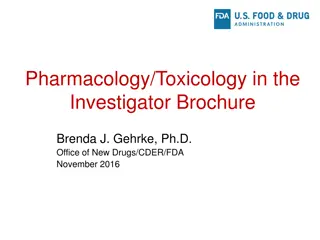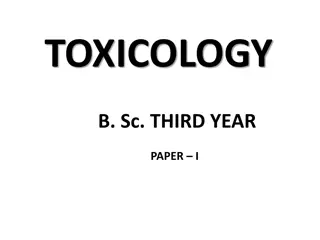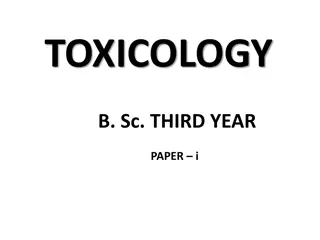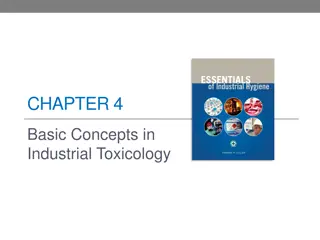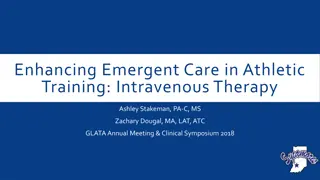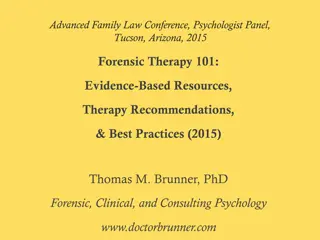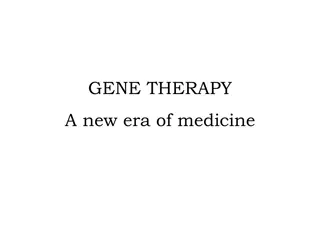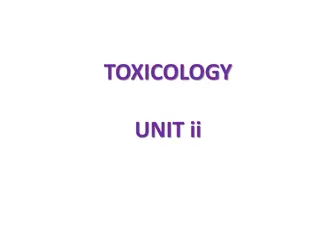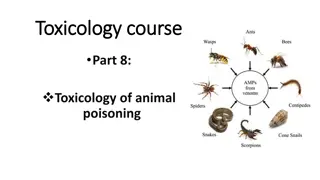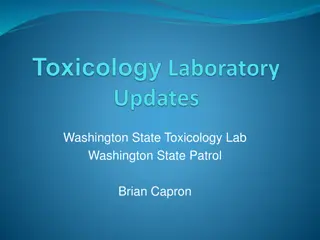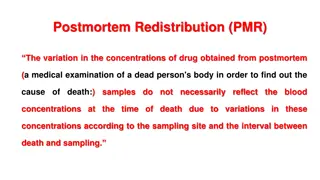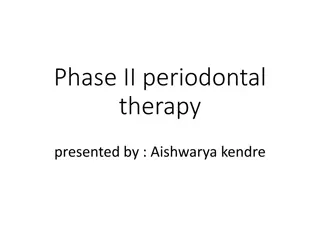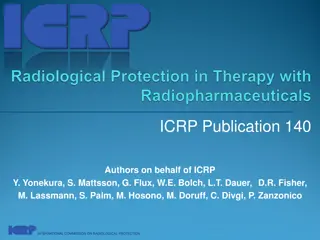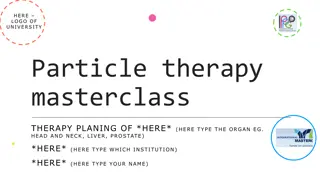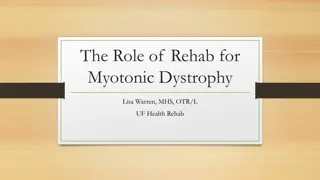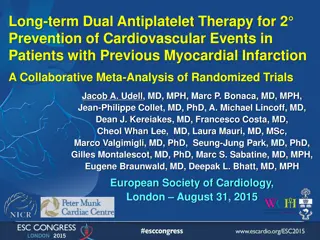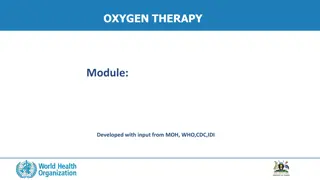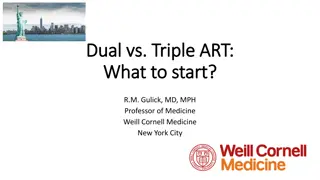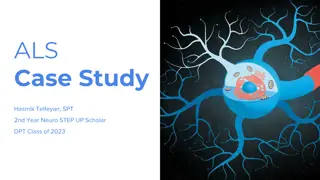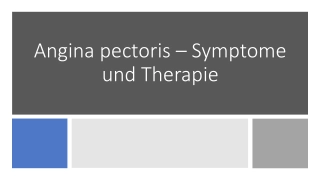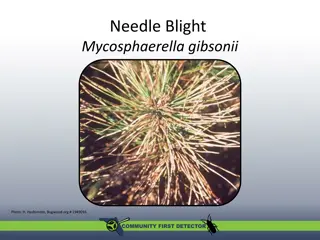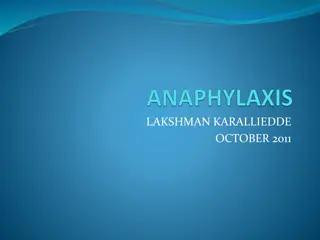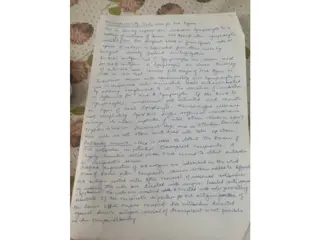Overview of Toxicology: Intoxications, Symptoms, and Therapy
Understanding toxicology is crucial to dealing with various types of intoxications, including accidental, foodborne, inhalation, industrial, and intentional exposures. Symptoms of toxic exposure can vary widely, affecting different body systems such as the cardiovascular, respiratory, and nervous systems. Recognizing these symptoms is vital for appropriate therapy and management of toxicities. Paracelsus' famous quote "The dose makes the poison" underscores the importance of dosage in toxicity.
Download Presentation

Please find below an Image/Link to download the presentation.
The content on the website is provided AS IS for your information and personal use only. It may not be sold, licensed, or shared on other websites without obtaining consent from the author. Download presentation by click this link. If you encounter any issues during the download, it is possible that the publisher has removed the file from their server.
E N D
Presentation Transcript
TOXICOLOGY Intoxications: Symptoms & Therapy Prof. RNDr. Zden k DVO K, DrSc., Ph.D. Department of Cell Biology Genetics Faculty of Science, Palacky University Olomouc
DOSE Philippus Aureolus Theophrastus Bombastus von Hohenheim (Paracelsus) Swiss- German philosopher, physician, botanist, astrologer, founder of toxicology (1493-1541) Sola dosis facit venenum The dose makes the poison" Alle Dinge sind Gift und nichts ist ohne Gift, allein die Dosis macht es, dass ein Ding kein Gift ist. CLASSIFICATION Accidental Household products (cleaning, dyes, solvents, anti-cough drugs, paracetamol) Food-born (adulterants, illicit drugs, toxins) Inhalation (petroleum products, solvents dyes, nailpolish, diesel exhausts) Industrial and environmental accidents, natural disasters Intentional Suicidal Homicidal Drug and alcohol abuse
SYMPTOMS Non-specific Acute disorders of consciousness, abnormal behaviour, coma, spasms, shock, respiratory distress, cardiac rhytm alterations, metabolic acidosis, diarrhoea, profuse vomiting Odours Bitter almonds = cyanide Acetone = methanol, acetylsalicylic acid Garlic = organophosphates, arsenic, phosphorus Alcohol = ethanol, methanol Oil = kerosens Skin Cyanosis non-responsive to oxygen = nitrites, nitrates, phenacetin, benzocain Erythem = CO, cyanide, anticholinergics Dry skin = anticholinergics Sweating = amphetamines, LSD, barbiturates, cocain, organophospates Icterus = paracetamol, mashrooms, Fe, phosphorus Blood pressure Hypertensis = sympathomimetics, amphetamine, organophosphates Hypotensis = narcotics, sedatives, hypnotics, -blockers, Ca-channel blockers, TCAs
SYMPTOMS Heart rate (pulse) Bradycardia = digitalis, hypnotics, -blockers, Ca-channel blockers Tachycardia = sympathomimetics, amphetamine, TCAs, cocain, alcohol, anticholinergics Cardiac arrhythmia Supraventricular tachycardia = TCAs, anticholinergics Atrial tachycardia = digitalis, TCAs, cocain Generally = -blockers, Ca-channel blockers, organophosphates Mucosa Dry = anticholinergics Hypersalivation = organophosphates, carbamates Lesis = acids, alkaline hydroxides Respiration Depression = alcohol, narcotics, barbiturates, sedatives, hypnotics Tachypnea = salicylates, amphetamine, CO Pulmonary edema = organophospates Pneumonia = hydrocarbons, kerosens Wheezing = organophosphates Kussmaul breathing = salicylates, methanol, ethylene glycol
SYMPTOMS CNS Spasms = TCAs, cocain, phenothiazines, amphetamines, salicylates, organophosphates Miosis = narcotics, phenothiazines, barbiturates, organophosphates, mushrooms Mydriasis = anticholinergics, sympathomimetics, cocain, TCAs, LSD, methanol Nystagmus = barbiturates, carbamazepine, alcohol, hidantoines Delirium/psychosis = anticholinergics, sympathomimetics, alcohol phenothiazines, LSD, cocain, heroin, heavy metals Coma = alcohols, anticholinergics, narcotics, sedatives, hypnotics, CO, salicylates Faintness/paralysis = organophosphates, carbamates, heavy metals GIT diarrhoea, vomiting = Fe, phosphorus, heavy metals, lithium, mushrooms, organophosphates
TOXIDROME Toxic + Syndrome symptoms Blood pressure Heart rate Respiratory rate Temperature Pupil size Bowel sounds Diaphoresis (sweating) Anticholinergic ~ ~ Cholinergic ~ ~ ~ ~ Hallucinogenic ~ ~ Sympathomimetic Sedative-hypnotic ~
IDENTIFICATION OF NOXAE Laboratory analyses urine, blood, stomach content, (ev. faeces mushrooms) Examination/inspection of the scene drug or household containers . MANAGEMENT/THERAPY Maintenance of vital functions Antidotes Elimination of noxae
ANTIDOTES Only small number of poissons/drugs have appropriate antidote Mostly receptor antagonists or enzyme competitors ANTIDOTE INDICATION ATROPINE -BLOCKERS CALCIUM CHELATORS (EDTA, BAL) AMYL NITRITE DEFEROXAMINE ANTIBODIES ETHANOL FLUMAZENIL NALOXONE N-ACETYLCYSTEINE PHYSOSTIGMINE organophosphates, carbamates, nerve agents, mushrooms theophylline Ca-channel blockers heavy metals cyanide iron digoxin, snake venom ethylene glycol, methanol benzodiazepines opiates paracetamol anticholinergic drugs
ELIMINATION OF NOXAE Irrigation (lavage) stomach, whole bowel Activated charcoal not effective for strong acids and alkali, solvents, Fe, Li, As Hemodialysis semipermeable membrane; extracorporeal device = salicylates, acetone, aniline, barbiturates, alcohols, toluen Hemoperfusion extracorporeal device; blood passes column with sorbent (active charcoal, resins) = small to medium-sized molecules that are difficult to remove by hemodialysis; e.g. TCAs, chloropromazine, paracetamol, theophyllin, barbiturates forced alkaline diuresis pH bicarbonate = salicylates, barbiturates (acidic drugs) forced acidic diuresis pH ascorbate, NH4Cl = cocaine, quinidine, strychnine (alkaline d.) Forced diuresis: *most of drugs are weak acids or bases *when urine is alkaline, elimination of acidic drugs is increased *when urine is acidic, elimination of alkaline drugs is increased *adjustment of pH of plasma/urine by infusion, according to pK of drug



